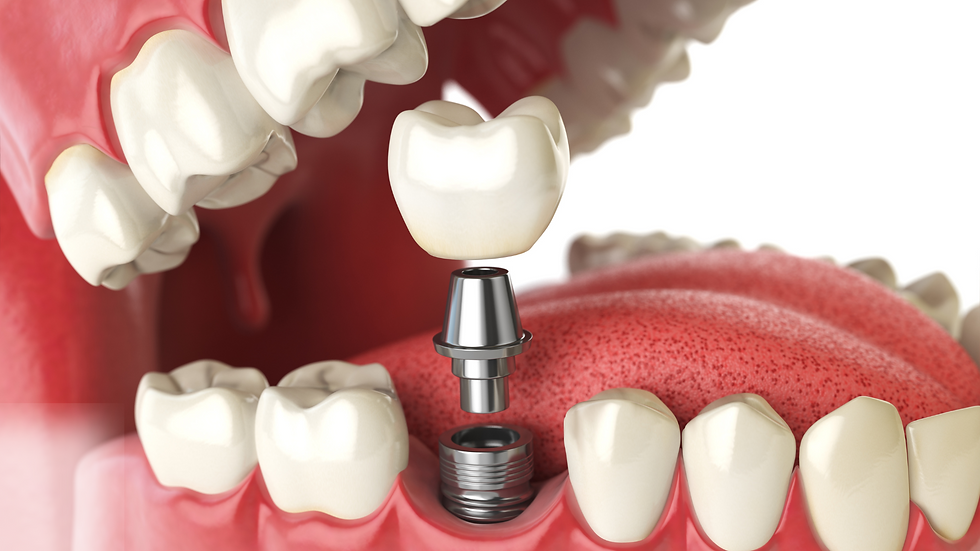Is Invisalign Right For Me?
- Bridge Street Dental Surgery
- Jun 29, 2023
- 4 min read
Whether you’re a teenager or adult, a crooked smile can affect your confidence and make you
hesitant to smile.
Thankfully there are a number of options available to you if you’d like to get your smile back and get you selfie-ready!
Your age, lifestyle and the severity of your tooth issues all play a part in determining the best
treatment for you. That’s why we always carry out a full consultation and assess your teeth and gums, as well as your desired outcome, before we agree on a treatment plan.
For most people there will be 2 options when it comes to straightening your teeth, correcting an overbite or underbite or reducing gaps and that’s traditional braces or Invisalign.
In this article, we’ll look at Invisalign and see whether it could be the right choice for you.

What is Invisalign?
While the outcome may be similar, there are many differences between traditional braces and Invisalign.
Braces consist of metal brackets and wires to correct your teeth, these are fitted to the front of your teeth and will be regularly adjusted over the course of around 16 months to achieve your desired outcome.
Invisalign treatment usually takes around the same length of time, but instead of permanently attached braces, you will use a series of clear alignment trays which can be taken out for eating, brushing or exercise, though they do need to be worn more often than not. .
Both do require you following set instructions for correct usage, oral hygiene and tooth maintenance.
Do I still need to visit the dentist with Invisalign?
The simple answer is yes. The first step in your Invisalign journey is to have a consultation
where we assess your teeth and then carry out a series of scans so technicians can craft your
alignment trays to perfectly fit your mouth.
As everyone’s teeth, jaws and bite are different, this is an essential part of the process.
Once the trays have been molded, you’ll need to come back to see your dentist so we can
check the fit and make any adjustments.
How does Invisalign work?
You will need to wear your aligners all day, every day; removing only for eating, brushing,
flossing or exercise (if you choose).
Expect them to feel tight upon first use but they will become more comfortable as time goes on and your teeth start moving into position.
You will need to change your aligner trays every couple of weeks and it’s important that you
stick to the schedule that your dentist gives you - even if you feel you’re ready to move on - as
this will interfere with your treatment plan and could affect your end results.
Face to face check ups with your dentist will continue around every 6 weeks so we can monitor your progress or make any adjustments to your aligners or overall treatment plan.
Pros of using Invisalign
The most common reason that people request Invisalign is the aesthetics factor. The clear trays are less noticeable than traditional metal brackets and wires.
The fact they can be removed easily is also a benefit, whether this is for a special occasion or
just brushing your teeth, you can remove and fit the aligners quickly and easily, although it is
important you wear your aligner trays for the recommended period of time each day in order to reach your results.
Studies have shown that being able to remove your aligners when eating or brushing can
improve your oral health by reducing the amount of bacteria that can build around the brackets, causing noticeable white or brown stains when the braces are removed.
While every care is taken to fit and maintain traditional metal braces, brackets can fall off and
wires can break leading to emergency treatment being needed. This won’t happen with
Invisalign (although you will need ongoing check ups and new trays should you lose them.
Cons of using Invisalign
Of course, Invisalign isn’t right for everyone and if it is, problems can still arise.
Invisalign is less effective for more complex dental issues, again this will be determined at your dental consultation and if we feel this isn’t the right choice for you we will let you know and offer other plans.
If you already have ongoing treatment in place, such as bridges, then Invisalign might not be
suitable.
While you can remove the aligners, you will still need to wear them between 20 and 22 hours a day so if you’re prone to forgetfulness or feel you won’t be able to stick to the guidelines, you may need to consider an alternative path.
If you consistently fail to remove your aligners when eating or drinking, then bacteria can form
and grow along your teeth and gum line which could lead to cavities or other dental problems.
Certain liquids can also cause staining of both the aligners and your teeth if not cleaned or
cared for properly.
As with traditional braces, you may find that some foods, especially hard foods, should be
avoided as you may experience some tooth soreness when the aligner trays are removed.
Ready to get your smile back?
If you think that Invisalign could be for you or your teenager, then why not schedule a
consultation with us now. Even if you’re unsure, we’ll be happy to discuss options with you and devise a dental treatment plan that works!






Comments